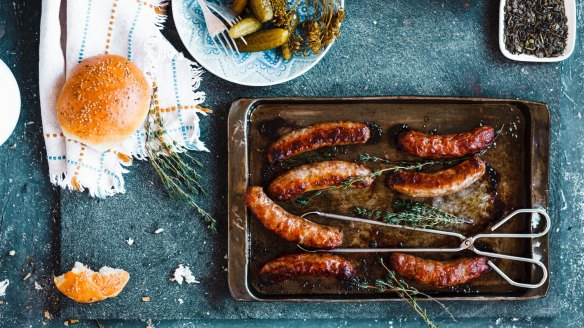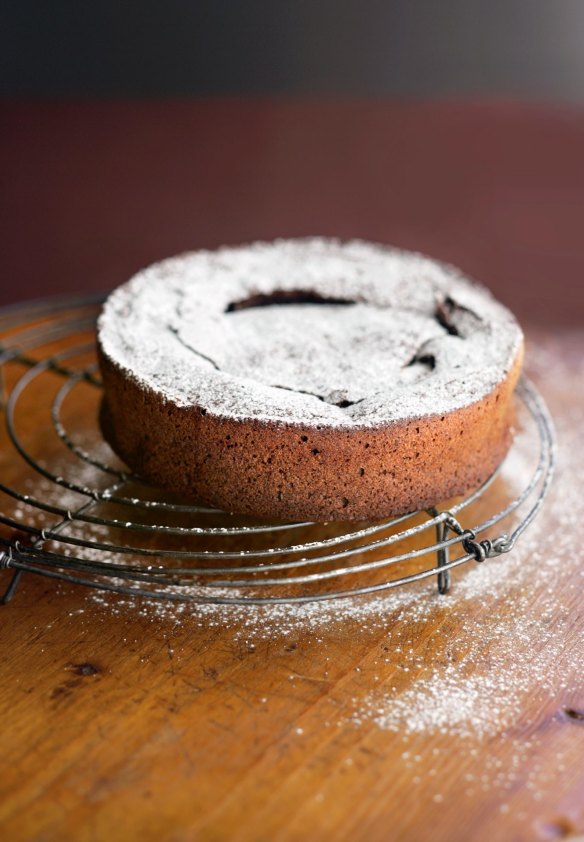The surprising secret to perfectly cooked sausages

What's the secret to cooking the perfect sausage? P. Humphreys
A great mate of mine was brought up on a sheep station in western Victoria. It was one of those big old houses built at the end of the 19th century with wide verandahs with a well in the courtyard. They ate what they grew and grew what they ate.
"I never knew you could cook a sausage in a frying pan until I left home and moved to the city," she told me recently. "We cooked everything in the Aga," she told me, referring to the classic wood-fired stove made with about as much steel as a Panzer tank. The radiant heat cooks the sausages and crisps the skin and the steady, even heat means the sausages almost never split. If you have a well-made sausage you can also make gravy with the pan juices.

For golden oven-roasted snags, preheat the oven to 200C (180C fan-forced), place the sausages on a rack in a roasting tray and cook for 15 to 20 minutes until done. And for heaven's sake, do not prick the snags before cooking. Sausages, like all meat, love a little rest before being served.
Why do some recipes suggest leaving the cake to cool in the tin, and others suggest to turn out onto a wire rack to cool. J. Rice
Most cakes are at their most brittle right at the end of the baking time, when they have risen to their highest and are light and airy. The butter in the mixture is still hot and in a liquid state. Allowing a cake to cool in the tin for five to 10 minutes lets it firm up a little, reducing the risk of cracking when you upturn it on to a cake rack. While the cake is sitting on the rack, moisture evaporates, making the crust harder and more durable. Cakes you want to keep for some time, such as a fruit cake for Christmas, need a durable, dry crust to avoid development of mould.
When a recipe calls for a "bunch" (of parsley or coriander for example), is there any standard as to what constitutes a bunch? R. Bryant
No. We're a nation of different football codes, railway gauges and food nomenclature (let's not go into potatoes scallop versus potato cake here). The National Trade Measurement Regulations 2009, along with the National Measurement Institute, allows the sale of vegetables and herbs in bunches but does not specify the size, the number of stems or the weight.
From experience writing cookbooks in which one has to quantify weights and measures, the average number of stems of parsley in a bunch is 12 but it can vary greatly depending on where one buys them. Greengrocers tend to be more generous than supermarkets and loose herbs sold in plastic packets – as opposed to plastic sleeves – are more costly than bunches sold in sleeves.
I also found that herbs grown hydroponically tend to have less intense flavour than those grown in soil. Because of this variation, one should treat herbs like a seasoning and add them to taste.
Send your vexing culinary conundrums to brainfood@richardcornish.com.au or tweet to @realbrainfood.
Appears in these collections
- More:
- Food
- Brain food
